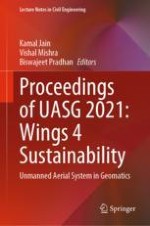2023 | OriginalPaper | Chapter
Automatic Ship Detection Using CFAR Algorithm for Quad-Pol UAV-SAR Imagery
Authors : Harshal Mittal, Ashish Joshi
Published in: Proceedings of UASG 2021: Wings 4 Sustainability
Publisher: Springer International Publishing
Activate our intelligent search to find suitable subject content or patents.
Select sections of text to find matching patents with Artificial Intelligence. powered by
Select sections of text to find additional relevant content using AI-assisted search. powered by
